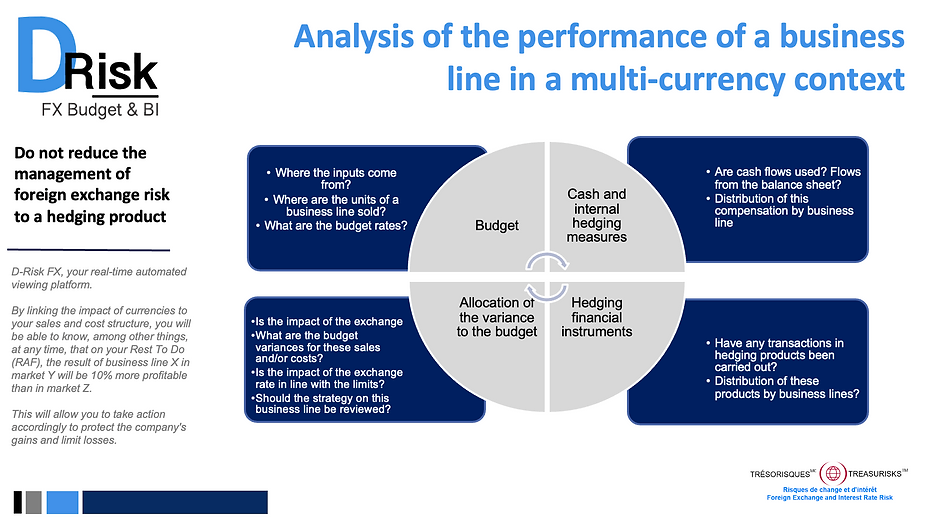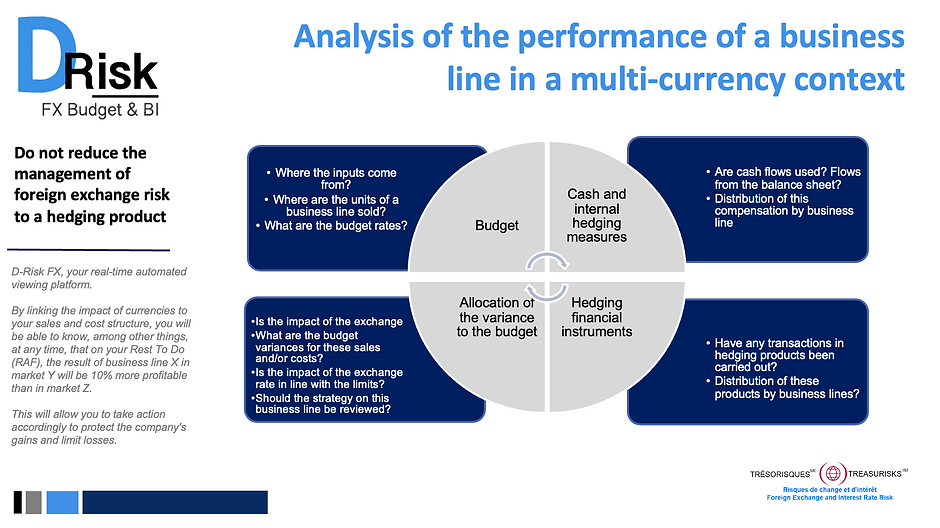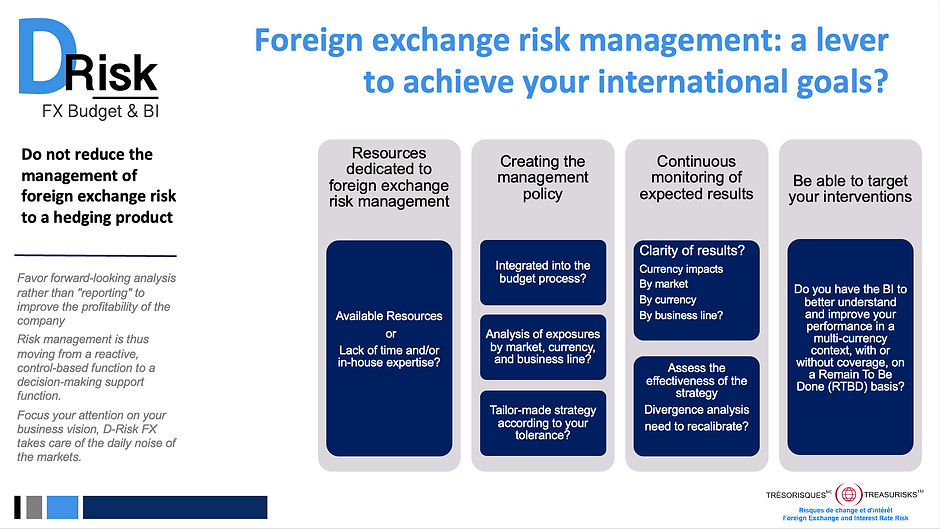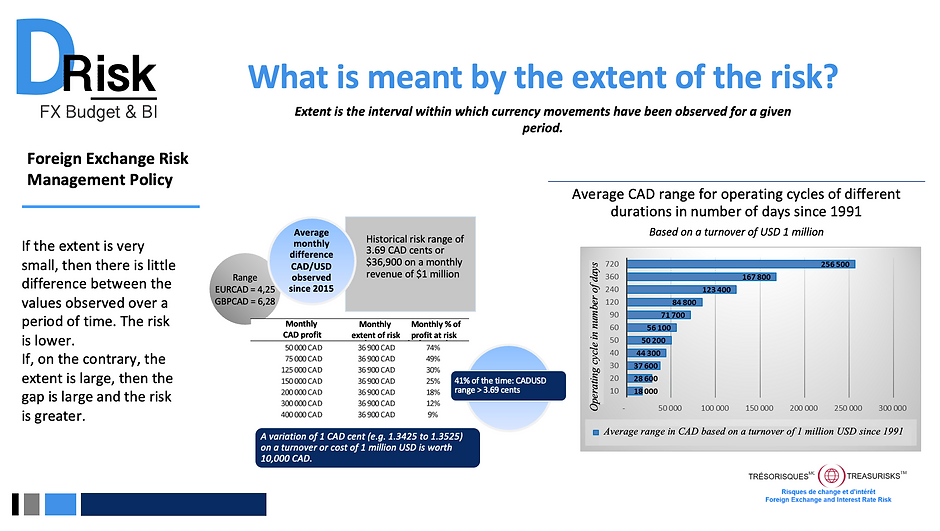Currency risk: How to take volatility into account in your management?

Volatility represents the change in the value of a currency and is of interest to us to the extent that it affects the company’s international operations.
Risk Management Policy

Risk can be seen has the probability of an event happening that will have an impact (+ or -) on your business objectives.
Are you confident that your existing currency risk management strategy will be successful if reality differs from your expectations?

Comparing indicators such as profitability due to currency movements, based on 4 simulated situations, can ensure that the strategy in place will continue to be effective.
Currencies and inflation have kept the market on its guard
On inflation, central banks have been stating all along that inflation would fade out fast, and it seems they have been proven right. Inflation is generally slowing down.
Analysis of the performance of a business line in a multi-currency context

Developing business abroad is a source of growth but involves risks for SMEs.
New markets, new currencies: a performance monitoring more complicated?

Expanding business abroad is a source of growth, but it also entails risks for SMEs.
Foreign exchange risk management: a lever to achieve your international goals?

Expanding business abroad is a source of growth, but it also entails risks for SMEs.
What is meant by the extent of the risk?

Expanding business abroad is a source of growth, but it also entails risks for SMEs. It is also complex to monitor the successive impacts of exchange rates on the company’s anticipated performance.
Two markets, one measure? How to assess the hidden currency risk in the budget?

In a previous article, we discussed the use of volatility as a measure of uncertainty, the factors that influence it, and its impacts on SMEs.


